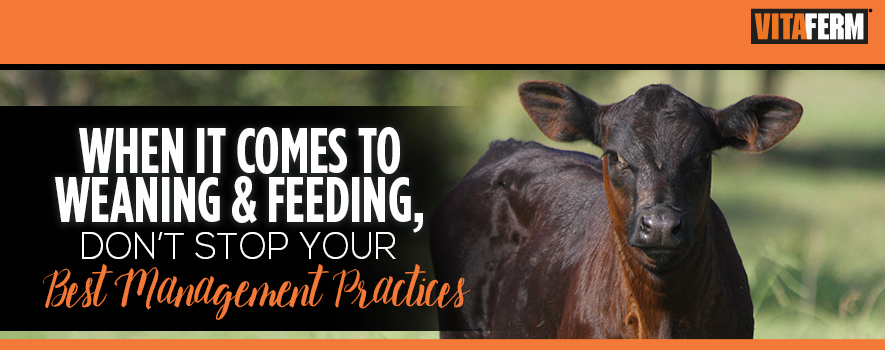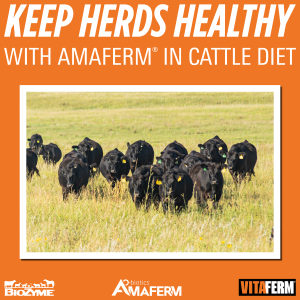by Twig Marston, Technical Sales Field Manager
When it comes to weaning and feeding calves, there are several best management practices (BMPs) you don’t want to stop. When focusing on BMPs you can create an effective management system and improve calf health and productivity. Tying nutrition, vaccination and management programs together minimizes problems, builds value and pays dividends in the long run.
Using an effective vaccination program involves using the proper vaccine, administration methods and timing. There are many choices of vaccines and all have been designed to build immunity and provide protection against serious diseases. The importance of protection against deadly diseases such as blackleg, bovine respiratory disease and other known pathogens should never be taken for granted. Comparing the cost of a vaccine to the potential loss of animal performance and/or life makes vaccinating a sound economic decision. The reality is we should all strive to give the proper vaccine in cattle so there is time for an immune response to build prior to the pathogen challenge.
Beef Quality Assurance (BQA) practices are the industry standard and should be included in everyone’s BMPs. Application in the neck, with vaccines that have been properly handled and stored, at the correct dosage and used with the preferred route of administration are key factors in making sure the products provide the best possible protection. Little things, like sanitation and proper handling, when overlooked have devastating consequences. By having a solid veterinarian-client-patient relationship, not only will your veterinarian be able to give advice on suitable vaccinations, but can also train you and your employees on proper handing, administration and timing so maximum results are achieved.
Timing is also critical to maximize returns and reduce complications with management decisions like castration and dehorning. University trials have shown delaying castration past 90 days of age can dramatically decrease future weight gains and increase stress, making calves more susceptible to sickness and death. Research reports constantly show losses of 20 or more pounds of body weight from delayed castration. Studies have also shown bull calves that are castrated later can have lower feedlot feed conversion (10% or more) and depressed carcass quality grades (up to 20% fewer USDA Choice carcasses). When some producers were asked why they delayed or dismissed castrating calves, the answers often centered on not having the facilities, time or expertise to carry out the practice. The economic rewards from every sale barn price recovery study have shown a positive return on investment for proper castration and dehorning practices. From both an animal health/well-being and an economic stand point, there appears no reason what-so-ever why producers should delay castration of feeder cattle past 90 to 100 days of age.
Nutrition also plays a key role in implementing BMPs that influence health and wellness. Feeding the correct amounts of protein, energy, minerals, trace minerals and vitamins increases the ability of the calf’s body to build immunity and fight disease challenges. BioZyme® Inc. is dedicated to providing cattle producers with products that compliment and fortify cow herd and growing cattle diets for a wide variety of situations and needs.
Preparing calves for the market requires a systematic approach focused on health, well-being, nutrition and performance. As producers develop their BMPs emphasis should be placed on doing things right. Right products. Right time. Right way. That will ensure the system works and the cattle will respond as desired.




1 thought on “Best Management Practices for Weaning and Feeding Calves”